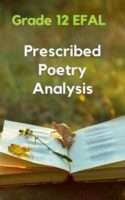Here is a link to the poem Still I rise by Maya Angelou.
‘Still I rise’ is a very famous poem with its repetition of the life-affirming chorus of resistance: Still I rise.
There is a debate amongst poetry critics – do we need to know about the poet and his or her context to appreciate their poem better? Or should we just study the poem on its own, as it was written?
In this case, does it help us as readers to know that Angelou was a black American poet who was sexually abused as a child, an experience that left her mute (unable to speak) for years afterwards? Perhaps it does give us greater understanding of the great strength it has taken her to ‘rise’. However the poem also clearly explains what she is rising against.
In the poem the speaker is talking to ‘you’ directly. This ‘you’ is an enemy with ‘bitter lies’, who shoots with words, cuts with eyes, kills with hatefulness. Here the poet is using images of violence to demonstrate the impact that the oppressor wants to have – they seem to want to destroy the speaker. So the speaker is using her own resilience as a weapon, a symbol of resistance to this ‘you’ who represents an oppressor. (An oppressor is someone who oppresses and dominates.)
History is often told by the victor – the person who won. African historians, for example, are now challenging the history written by white western historians, pointing out the bias, the one-sided approach. In the first stanza the speaker makes reference to this, telling the oppressor that they have lied about her – that the history that they have written is ‘bitter, twisted lies’. She says that though she has been ‘trod’ (stepped on) in the dirt, she will rise, like dust.
What more do we learn about this oppressor? They seem to find ‘sassiness’ (a kind of cheekiness), ‘haughtiness’ (a feeling of self-importance) and ‘sexiness’ offensive. So I think we can assume that the oppressor is male, and feels threatened by the speaker’s outspokenness! The speaker is challenging the view that women need to be meek, obedient, and without sexual agency. She says she dances ‘like I’ve got diamonds at the meeting of my thighs’ – a powerful celebration of a woman’s sexuality as being as beautiful, strong and valuable as diamonds. There are some lovely images of the speaker’s boldness. She walks like she has ‘oil wells pumping in my living room’, ‘gold mines Diggin in my own back yard – oil wells and gold mines here being representative of huge wealth. She also uses natural imagery to describe her power: in the third stanza her hope is like the moon, the sun, the tides – it will rise again, and later she describes herself a black ocean, ‘welling and swelling’, so again declaring her resilience and resistance as powerful – and inevitable – as natural forces.
In the last two stanzas the speaker draws on her black identity for resistance to this white oppressor. She is a ‘black ocean’, she comes from a past ‘rooted in pain’. This is reference to what she names in the next stanza – slavery. Black Americans are descended from people captured and sold as slaves to work on white farmers’ plantations – they are from ‘huts of history’s shame’. She draws on the gifts that her ‘ancestors’ gave – and here she is drawing strength from an African identity and culture that people were ripped away from.
She ends with her powerful chorus of ‘I rise’ – repeated three times for a rhythm and emphasis.


